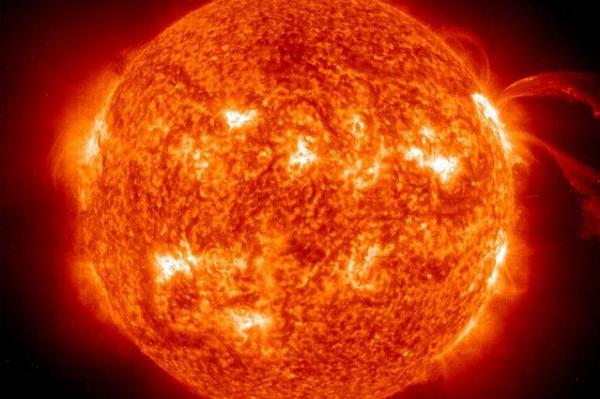
Aug. 2 (UPI) — According to a new study, the sun’s core is spinning four times as fast as the solar surface.
“The most likely explanation is that this core rotation is left over from the period when the sun formed, some 4.6 billion years ago,” Roger Ulrich, a professor emeritus of astronomy at UCLA, said in a news release. “It’s a surprise, and exciting to think we might have uncovered a relic of what the sun was like when it first formed.”
Most scientists assumed the sun’s core and surface were rotating at the same speed. While the idea that the core might feature a faster rotational speed had been proffered, scientists couldn’t figure out how to measure such a phenomenon.
Scientists were finally able to estimate the rotation of the sun’s core by analyzing acoustic waves in the sun’s atmosphere. For the last 15 years, a team of researchers with NASA and the European Space Agency have been measuring how long it takes for acoustic waves to travel to the sun’s core and back.
The observations were made possible by Global Oscillations at Low Frequency instrument, or GOLF, attached to the the Solar and Heliospheric Observatory, the SoHO spacecraft. An acoustic wave’s path to the core and back is influenced by the sloshing motion of gravity waves deep inside the solar interior.
In analyzing 15 years worth of GOLF data, researchers were able to use the influence of gravity waves on acoustic waves to estimate how fast the core is spinning.
As detailed this week in the journal Astronomy and Astrophysics, researchers found the sun’s core spinning four times faster than its surface. They also confirmed that the core is much hotter, some 29 million degrees Fahrenheit, or 15.7 million Kelvin. The sun’s surface is 10,000 degrees Fahrenheit, or 5,800 Kelvin.
The discrepancy between the sun’s core and surface rotational speeds may explain how the star was born and evolved, and it also may explain the behavior or sun spots.





